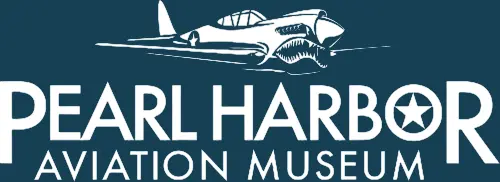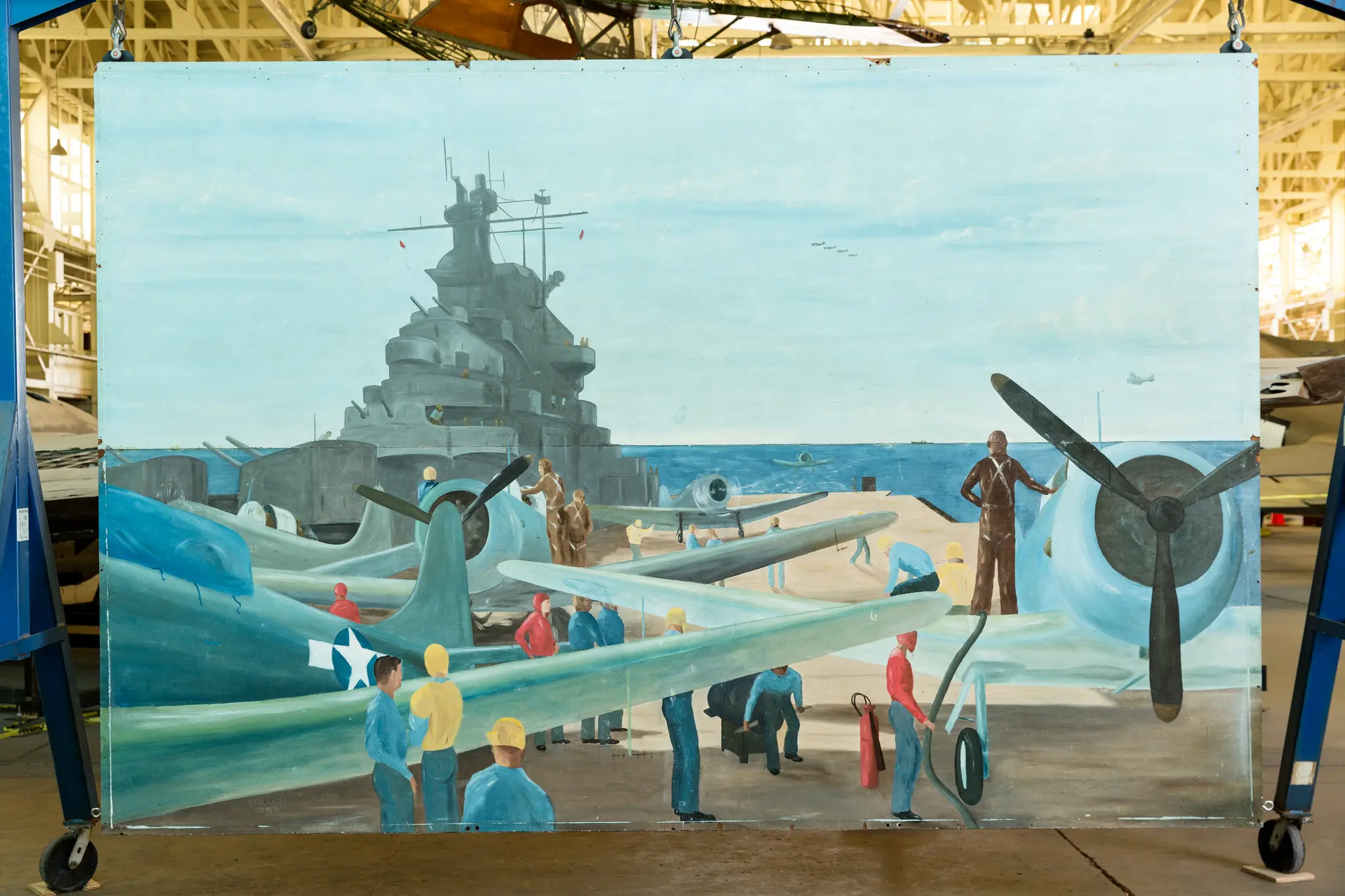Posted on May 31, 2016
By Burl Burlingame | [email protected] | Pearl Harbor Aviation Museum
The history of World War II is written not just in words, but also in images. That includes artwork that was painted in the far-flung outposts of the war, using materials borrowed, scrounged and occasionally liberated, painted on the walls and ceilings of temporary structures, built just for the duration. The comforting images painted in these outposts reminded soldiers and sailors of their home life, of their dreams, and of the mission at hand.
These artworks offer a valuable insight to the conflict, as well as being examples of popular folk art of the era. Very few still exist, with most being lost to time and the elements.
Six Murals at Pearl Harbor Aviation Museum

The six murals recently hung in Hangar 79 at Pearl Harbor Aviation Museum were painted during World War II, and decorated the Navy theater at Midway atoll. The theater was built by the 123rd Naval Construction Battalion — the unit famous as the can-do “Seabees” — and the insignia of the 123rd NCB were three horses racing neck and neck, a symbol of the urgency of war. The murals were painted by Victor Nels Solander of A Company, 2nd Platoon, a Missoula, MT, native who joined the Seabees in his 30s and returned home after the war.
The murals depict scenes lifted out of the widely scattered reaches of the Pacific War:
* a gleaming, golden torpedo being carefully loaded into a submarine.

* an amphibious invasion of a South Pacific island, with Army soldiers dashing out of Navy LCVP landing craft into a hail of gunfire.
* a South Dakota-class battleship steaming along under leaden skies.

* a bustling carrier deck filled with SBD Dauntless dive bombers being prepared to sortie.
* a Seabee motorized crane painted in Navy gray, lifting a load of pierced-steel planking (PSP) runway decking.

* an 80-foot ELCO PT boat dashing at high speed on a calm sea. Sometime in the 1960s, somebody added the letters “PT109” to the mural, honoring President John F. Kennedy’s wartime service.
Using whatever military paints he could scrounge, Solander painted the 8-by-12-foot murals on the canvas-like back of Masonite board, in turn attached to thin plywood. The building was originally built as a gymnasium with large windows, but during construction the role was altered to theater, and the holes intended for windows were filled with Solander’s murals.
As for the artist, he didn’t have much time to enjoy his creations. The end of the war found Solander and the 123rd NCB on Calicoan Island near Samar in the Philippines, a tropical paradise largely untouched by the war.

Victor Nils Solander, born on October 14, 1912, in Missoula, Montana. We don’t have any information about his youth or background, except that he had five siblings. He would have been 30 years old in 1942, too old to serve in an active duty role. However, the SeaBees took older, experienced men for largely noncombat roles. Solander died in 1994, in his Missoula hometown.
In the six decades since the war, the plywood backing for the murals has been chewed up by termites and the cardboard-like Masonite turned brittle.

The U.S. Fish and Wildlife Service and their non-profit association, Friends of Midway Atoll National Wildlife Refuge, were anxious to preserve the murals from the crumbling theater, and turned to the expertise of Pearl Harbor Aviation Museum’s curatorial department. After careful removal and shipping to Pearl Harbor, the murals were loaned to the museum for stabilization and display.
Stabilization included removal of rotted wood, and the flimsy pieces that remained were attached to steel structural forms and treated for insects. The painting surfaces were carefully cleaned by hand before being coated with a benign preservative.

Many volunteers, including several from the Navy Information Operations Detachment at Kaneohe, worked long hours to meticulously clean the murals.
When the war ended, the 123rd NCB ceased to exist, subsumed into another construction brigade, and their quickly built structures across the Pacific crumbled over the years. As the Seabee-built theater at Midway began to deteriorate, the staff at Midway Atoll National Wildlife Refuge/Battle of Midway National Memorial took responsibility for moving the murals for safekeeping and public visibility.
The future of the Midway theater itself is in doubt. It has been ravaged by termites and weather.
Midway Atoll National Wildlife Refuge/Battle of Midway National Memorial is part of Papahanaumokuakea Marine National Monument.


